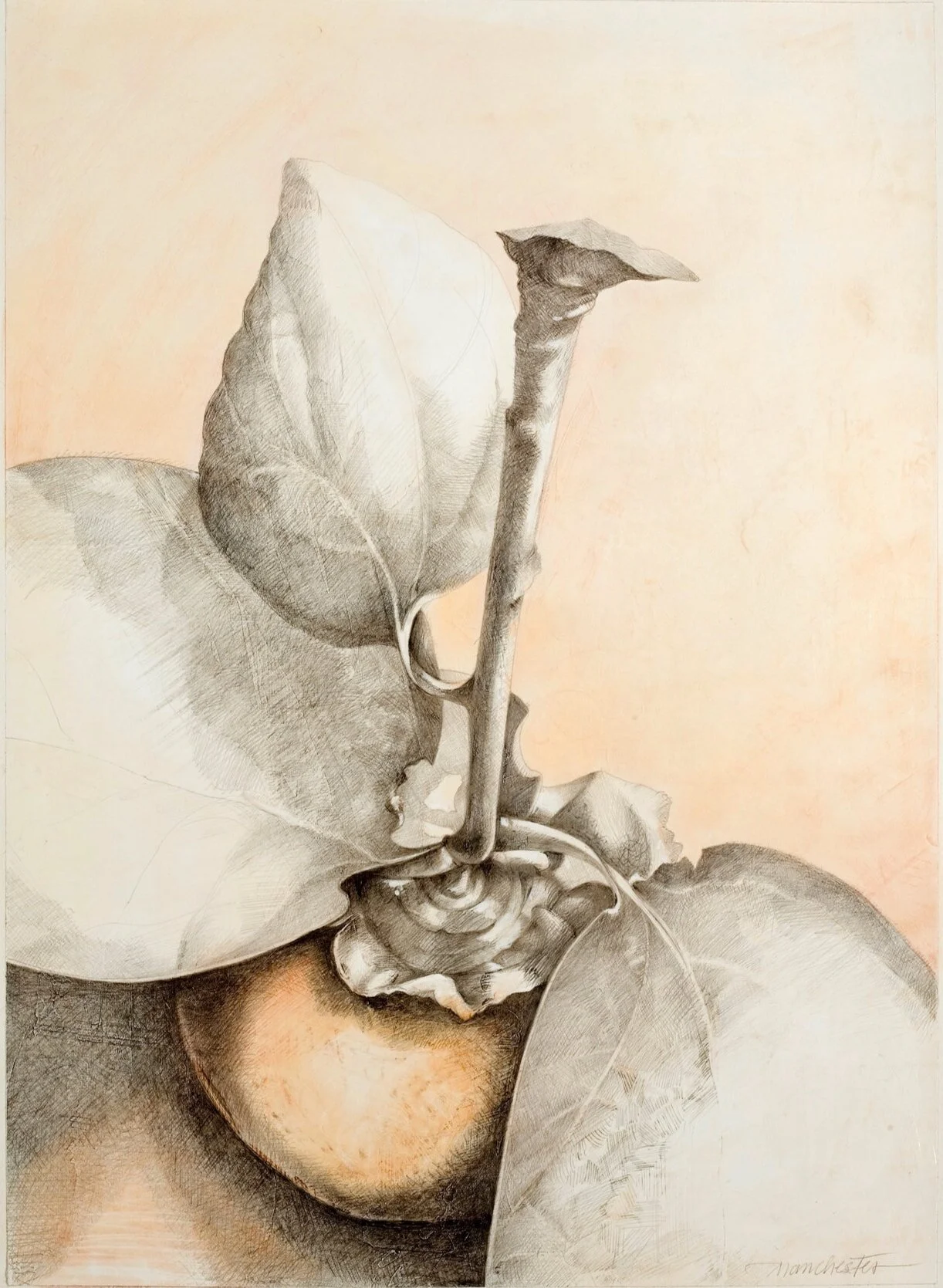:: Susan Manchester
Persimmon Branch, 2008, Silverpoint on Paper
I learned the arcane process of making drawings with a silver wire in Florence, Italy, during my junior year abroad. I studied at the Accademia di Belle Arti, where drawing and etching were my primary focus. I was granted entrée to study at the Uffizi Gallery Library of Prints and Drawings. I went every morning and had the luxury of selecting matted works of artists I wanted to study. The stack of my day’s selections was delivered to my small desk, emanating a strong scent of camphor. I was able to study for hours, unsupervised, silverpoint and other drawings and etchings by Italian and Northern Renaissance artists including Andrea Mantegna, Benozzo Gozzoli and Leonardo da Vinci, as well as engravings and etchings by Hans Holbein, Albrecht Dürer, and Rembrandt. Mysteriously, I was never permitted to look at a Botticelli drawing, but that is another story. The Library’s collection provided me an extraordinary opportunity to become completely immersed in the organic presence of these artists and the study of the mediums they utilized.
My first silverpoint drawing was a likeness of Debussy, which one of my professors subsequently purchased. I was able to visit it on several occasions, and I was always astonished to see how the image subtly transformed itself over time into something I had not created or imagined. My sensation was that I had actually only done the first half of the drawing. Tarnishing gave it such depth and richness, that I hardly recognized it as the drawing I had made six months earlier.
Tattered Wayfarer”, 2017, Silverpoint on prepared paper
Silver, whose elemental symbol is AG (for Argentum), is one of the seven metals of antiquity. Artists have used it as a drawing tool since the 12th century. In fact, silverpoint is said to be the bridge between drawing and etching. Sterling silver (925) reacts with sulfur or sulfur compounds in the air, producing silver sulphide. Over time, the incised silver marks made on coated paper undergo a slow process of corrosion called sulphidation, in which the silver lines tarnish, gradually deepening the overall tone and imparting greater presence to the image.
Golden Braids, 2015, 925 Silverpoint and Pastel on prepared paper



